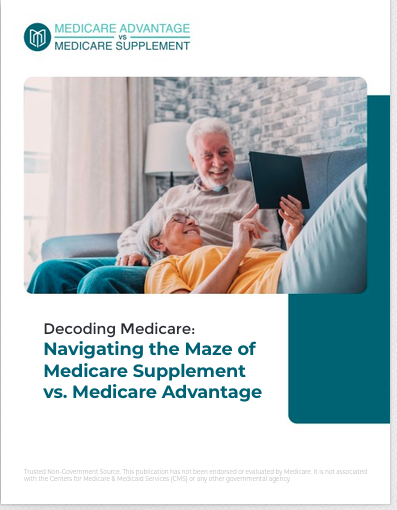Key Takeaways
-
Medicare Part D helps cover prescription drug costs, but understanding its structure can help you avoid unexpected expenses.
-
From formularies to out-of-pocket costs, knowing how Part D works ensures you get the best value for your medications.
Understanding Medicare Part D: What You Need to Know About Prescription Drug Coverage
Medicare Part D is designed to help with the costs of prescription drugs, but it isn’t as simple as just signing up and getting coverage. There are important details you should understand before enrolling to ensure you’re making the best decision for your healthcare needs. In this guide, we break down five key facts about Medicare Part D so you can navigate your coverage with confidence.
1. Enrollment Windows Matter: Know When to Sign Up
Signing up for Medicare Part D isn’t automatic—you need to enroll during specific periods to avoid penalties and gaps in coverage. Here’s what you need to know about enrollment timelines:
-
Initial Enrollment Period (IEP): This seven-month window starts three months before you turn 65, includes your birth month, and lasts three months after. You can sign up for Part D during this period if you are enrolling in Medicare for the first time.
-
Annual Enrollment Period (AEP): From October 15 to December 7 each year, you can join, switch, or drop your Part D plan. Any changes you make take effect on January 1.
-
Medicare Advantage Open Enrollment Period (MA OEP): From January 1 to March 31, those already enrolled in a Medicare Advantage plan can switch to another plan or drop it entirely and return to Original Medicare.
-
Special Enrollment Periods (SEPs): You may qualify for an SEP if you lose other creditable drug coverage, move to a new area, or experience other life changes. These enrollment opportunities vary based on the specific situation.
-
Late Enrollment Penalty (LEP): If you don’t sign up for Part D when first eligible and go 63 or more consecutive days without creditable prescription drug coverage, you’ll face a penalty that gets added to your premium for as long as you have Part D. The penalty increases the longer you wait to enroll.
2. How Medicare Part D Plans Cover Your Prescriptions
Medicare Part D plans don’t cover every medication the same way. Each plan has a formulary, which is a list of covered drugs categorized into different tiers based on cost. Understanding how this system works can save you significant money over time.
-
Tier 1: Usually the lowest-cost generic drugs.
-
Tier 2: Preferred brand-name drugs with a moderate copayment.
-
Tier 3: Non-preferred brand-name drugs, often at a higher cost.
-
Tier 4 and Specialty Tiers: High-cost or specialty medications with the highest out-of-pocket expenses.
Each plan’s formulary is different, and insurance companies may change drug tiers or remove medications from coverage each year. This makes it essential to review your plan’s formulary annually to ensure your prescriptions are still covered at a reasonable cost.
3. Understanding the Four Phases of Part D Costs
Medicare Part D has a four-phase cost structure, which affects how much you pay throughout the year:
-
Deductible Phase: You pay out-of-pocket for prescriptions until you meet your annual deductible. For 2025, the maximum deductible is $590. Some plans may have lower deductibles.
-
Initial Coverage Phase: After reaching your deductible, you pay a percentage of your drug costs (copayments or coinsurance) while your plan covers the rest. This continues until your total drug spending reaches $5,030 in 2025.
-
Catastrophic Coverage Phase: In 2025, once your out-of-pocket drug costs reach $2,000, your plan will cover 100% of covered drug costs for the rest of the year. This is a major change from previous years and eliminates the so-called “donut hole.”
-
Post-Catastrophic Coverage: With the 2025 reforms, catastrophic coverage fully eliminates out-of-pocket costs for the remainder of the year, offering significant savings for those with high drug expenses.
4. Some Drugs May Require Extra Steps Before Approval
Not all prescriptions are filled immediately under Medicare Part D. Some medications require additional steps before they’re approved, including:
-
Prior Authorization: Your doctor must get approval from your plan before certain medications are covered.
-
Step Therapy: You may be required to try a lower-cost drug before your plan covers a more expensive one.
-
Quantity Limits: Some medications have limits on how much you can receive at one time.
If you need a medication that falls under one of these restrictions, your doctor can submit a request to your plan for an exception. Plans must provide a response to these requests within 72 hours or sooner in urgent situations.
5. You Can Change Plans Each Year to Meet Your Needs
Your health and medication needs can change, and so can Medicare Part D plans. Since formularies, premiums, and cost-sharing amounts can vary each year, reviewing your plan options annually can save you money.
-
Compare plans during the Annual Enrollment Period (October 15 – December 7) to ensure you’re getting the best coverage for your prescriptions.
-
Check if your medications have changed tiers or if a new plan offers better coverage.
-
Look at star ratings to see how well a plan performs based on factors like customer service and drug pricing accuracy.
-
Use Medicare Plan Finder to compare costs and benefits across different Part D plans.
Being proactive about reviewing your options ensures you don’t overpay for prescription drug coverage.
Making the Most of Medicare Part D in 2025
Understanding how Medicare Part D works helps you make informed choices about your prescription drug coverage. By enrolling on time, reviewing formularies, understanding cost phases, and keeping an eye on annual changes, you can avoid surprises and ensure you have access to the medications you need.
If you need help choosing the right plan, reach out to a licensed agent listed on this website. They can guide you through your options and ensure you find coverage that meets your prescription drug needs.









